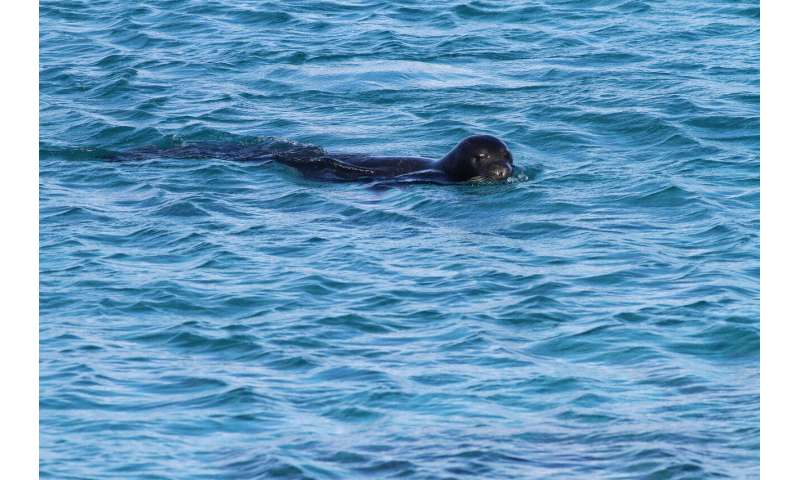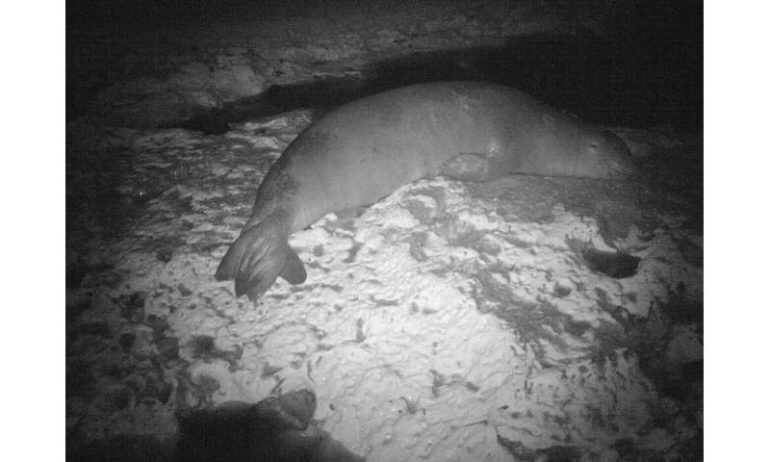Scientists have discovered a previously unknown breeding site used by the world’s rarest seal species.
The Mediterranean monk seal is classified as “endangered”, with a total population of about 700.
The new study—by the University of Exeter and the Society for the Protection of Turtles (SPOT)—used camera-traps to confirm breeding in caves in northern Cyprus, with at least three pups born from 2016-19 at one cave.
Only certain caves are suitable for monk seal breeding and resting, so—although the numbers are small—the researchers say urgent action is needed to protect these caves.
“This area of coastline in being developed rapidly, especially for construction of hotels,” said Dr. Robin Snape, of the Centre for Ecology and Conservation on Exeter’s Penryn Campus in Cornwall.
“A survey of the coast in 2007 found 39 possible breeding caves, and some of these have already been destroyed.
“The main breeding site we identify in this study currently has no protected status, and we are working with local authorities to try to change this.”
Lead author Dr. Damla Beton, of SPOT, added: “Another major threat to monk seals in this area is bycatch (accidental catching by fisheries).

“We are working with fishers and government ministries to ensure protection areas at sea, because at present no measures are implemented to mitigate bycatch in the core areas used by these seals.”
The team has now established long-term monitoring of the breeding caves, aiming to determine the size of this seal population.
The paper, published in Oryx, is entitled: “New monitoring confirms regular breeding of the Mediterranean monk seal in Northern Cyprus.”
Endangered Mediterranean monk seals aided by unique intervention
More information:
New monitoring confirms regular breeding of the Mediterranean monk seal in Northern Cyprus, Oryx (2021). DOI: 10.1017/S0030605320000848
Provided by
University of Exeter
Citation:
Rarest seal breeding site discovered (2021, March 1)
retrieved 2 March 2021
from https://phys.org/news/2021-03-rarest-site.html
This document is subject to copyright. Apart from any fair dealing for the purpose of private study or research, no
part may be reproduced without the written permission. The content is provided for information purposes only.



